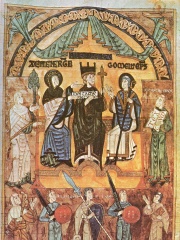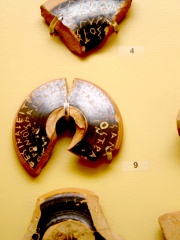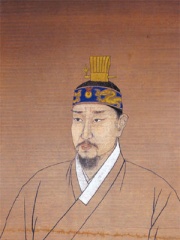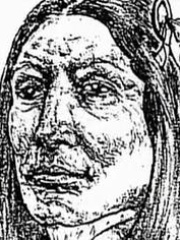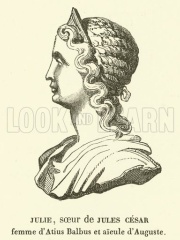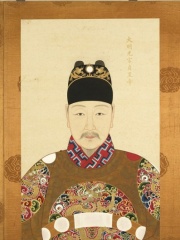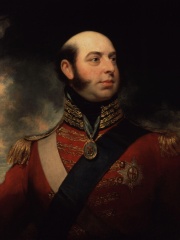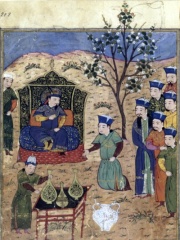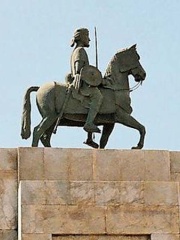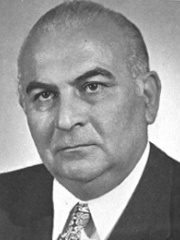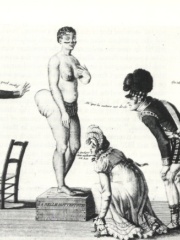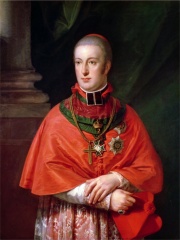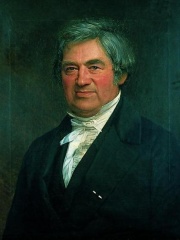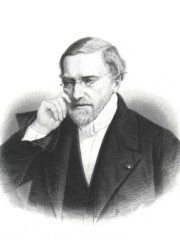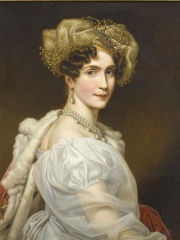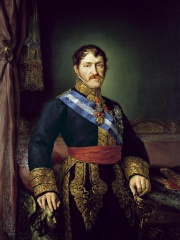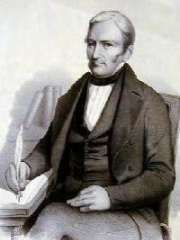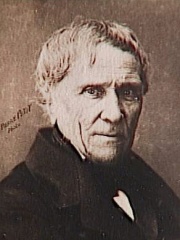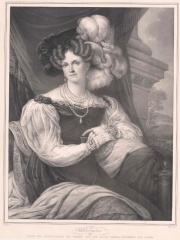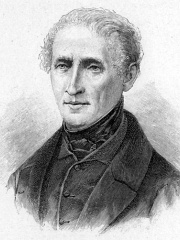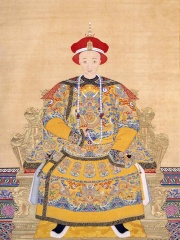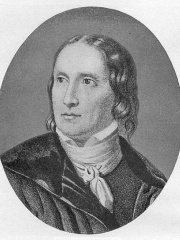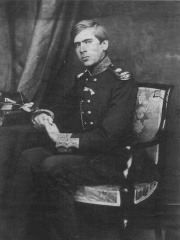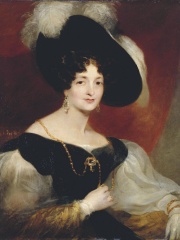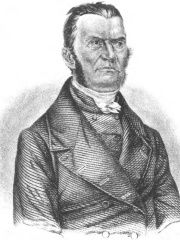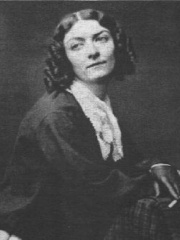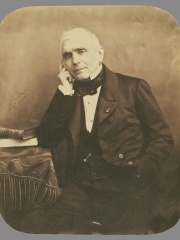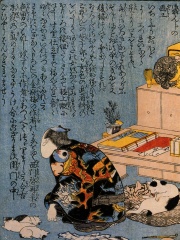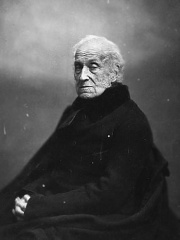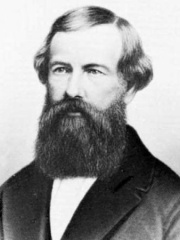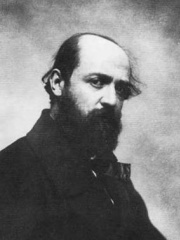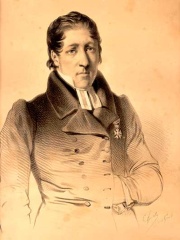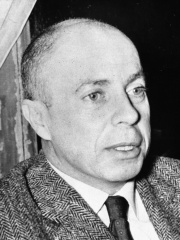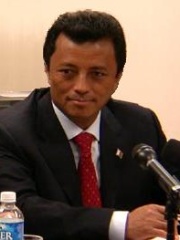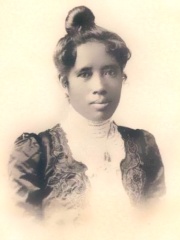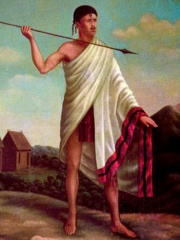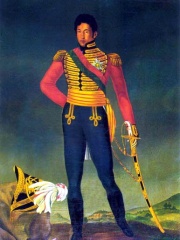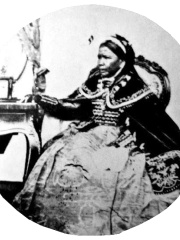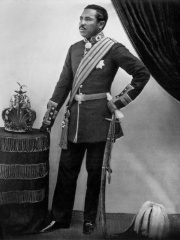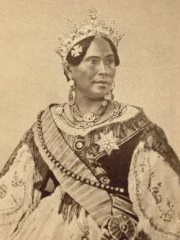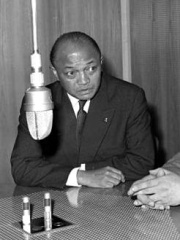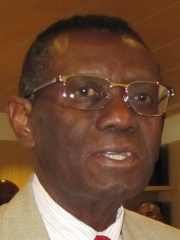POLITICIAN
Ranavalona I
1788 - 1861
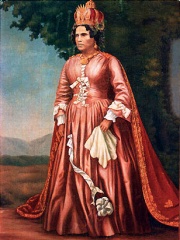
 Ranavalona I
Ranavalona I
Ranavalona I (born Rabodonandrianampoinimerina; 1778–16 August 1861), also known as Ramavo or Ranavalo-Manjaka I or Ranavalona reniny, was the sovereign of the Kingdom of Madagascar from 1828 to 1861. After positioning herself as queen following the death of her young husband Radama I, she pursued a policy of isolationism and self-sufficiency. She sought reduced economic and political ties with European powers and took vigorous measures to eradicate the small but growing Malagasy Christian movement initiated under Radama I by members of the London Missionary Society. Ranavalona made heavy use of the traditional practice of fanompoana (forced labor as tax payment) to complete public works projects and develop an army. Read more on Wikipedia
Her biography is available in 34 different languages on Wikipedia. Ranavalona I is the 2,727th most popular politician (up from 3,952nd in 2024), the 2nd most popular biography from Madagascar (up from 3rd in 2019) and the most popular Malagasy Politician.
Ranavalona I was the Queen of Madagascar from 1828 to 1861. She is most famous for her policies which were designed to make the country more traditional and conservative. These policies included banning Christianity, outlawing the wearing of clothes with European styles, and forbidding the teaching of reading and writing.
Memorability Metrics
Page views of Ranavalona I by language
Among POLITICIANS
Among politicians, Ranavalona I ranks 2,727 out of 19,576. Before her are Alfonso III of Asturias, Xanthippus, Konstantinos Karamanlis, Crown Prince Sado, Crazy Horse, and Julia Minor. After her are Taichang Emperor, Prince Edward, Duke of Kent and Strathearn, Gaykhatu, Li Hongzhang, Ahmad ibn Ibrahim al-Ghazi, and Mario Beccaria.
Most Popular Politicians in Wikipedia
Go to all RankingsAlfonso III of Asturias
848 - 910
HPI: 70.34
Rank: 2,722
Xanthippus
590 BC - 500 BC
HPI: 70.34
Rank: 2,723
Konstantinos Karamanlis
1907 - 1998
HPI: 70.34
Rank: 2,724
Crown Prince Sado
1735 - 1762
HPI: 70.34
Rank: 2,725
Crazy Horse
1840 - 1877
HPI: 70.33
Rank: 2,726
Julia Minor
101 BC - 51 BC
HPI: 70.33
Rank: 2,727
Ranavalona I
1788 - 1861
HPI: 70.33
Rank: 2,728
Taichang Emperor
1582 - 1620
HPI: 70.33
Rank: 2,729
Prince Edward, Duke of Kent and Strathearn
1767 - 1820
HPI: 70.32
Rank: 2,730
Gaykhatu
1300 - 1295
HPI: 70.32
Rank: 2,731
Li Hongzhang
1823 - 1901
HPI: 70.31
Rank: 2,732
Ahmad ibn Ibrahim al-Ghazi
1506 - 1543
HPI: 70.30
Rank: 2,733
Mario Beccaria
1920 - 2003
HPI: 70.30
Rank: 2,734
Contemporaries
Among people born in 1788, Ranavalona I ranks 8. Before her are Lord Byron, Sarah Baartman, Augustin-Jean Fresnel, Archduke Rudolf of Austria, Christian Jürgensen Thomsen, and Jean-Victor Poncelet. After her are Princess Augusta of Bavaria, Infante Carlos, Count of Molina, Étienne Cabet, Antoine César Becquerel, Princess Wilhelmine of Baden, and Joseph Freiherr von Eichendorff. Among people deceased in 1861, Ranavalona I ranks 13. Before her are Xianfeng Emperor, Friedrich Carl von Savigny, Pedro V of Portugal, Princess Victoria of Saxe-Coburg-Saalfeld, Pavel Jozef Šafárik, and Lola Montez. After her are Eugène Scribe, Utagawa Kuniyoshi, Adam Jerzy Czartoryski, Elisha Otis, Henri Murger, and Lars Levi Laestadius.
Others Born in 1788
Go to all RankingsLord Byron
WRITER
1788 - 1824
HPI: 82.84
Rank: 2
Sarah Baartman
RELIGIOUS FIGURE
1788 - 1815
HPI: 74.82
Rank: 3
Augustin-Jean Fresnel
PHYSICIST
1788 - 1827
HPI: 73.35
Rank: 4
Archduke Rudolf of Austria
RELIGIOUS FIGURE
1788 - 1831
HPI: 72.87
Rank: 5
Christian Jürgensen Thomsen
ARCHAEOLOGIST
1788 - 1865
HPI: 71.23
Rank: 6
Jean-Victor Poncelet
MATHEMATICIAN
1788 - 1867
HPI: 70.75
Rank: 7
Ranavalona I
POLITICIAN
1788 - 1861
HPI: 70.33
Rank: 8
Princess Augusta of Bavaria
NOBLEMAN
1788 - 1851
HPI: 70.30
Rank: 9
Infante Carlos, Count of Molina
POLITICIAN
1788 - 1855
HPI: 69.22
Rank: 10
Étienne Cabet
PHILOSOPHER
1788 - 1856
HPI: 69.00
Rank: 11
Antoine César Becquerel
PHYSICIST
1788 - 1878
HPI: 68.25
Rank: 12
Princess Wilhelmine of Baden
COMPANION
1788 - 1836
HPI: 68.23
Rank: 13
Joseph Freiherr von Eichendorff
WRITER
1788 - 1857
HPI: 68.18
Rank: 14
Others Deceased in 1861
Go to all RankingsXianfeng Emperor
POLITICIAN
1831 - 1861
HPI: 73.41
Rank: 7
Friedrich Carl von Savigny
HISTORIAN
1779 - 1861
HPI: 73.18
Rank: 8
Pedro V of Portugal
POLITICIAN
1837 - 1861
HPI: 71.95
Rank: 9
Princess Victoria of Saxe-Coburg-Saalfeld
NOBLEMAN
1786 - 1861
HPI: 70.97
Rank: 10
Pavel Jozef Šafárik
WRITER
1795 - 1861
HPI: 70.63
Rank: 11
Lola Montez
ACTOR
1821 - 1861
HPI: 70.44
Rank: 12
Ranavalona I
POLITICIAN
1788 - 1861
HPI: 70.33
Rank: 13
Eugène Scribe
WRITER
1791 - 1861
HPI: 69.14
Rank: 14
Utagawa Kuniyoshi
PAINTER
1797 - 1861
HPI: 68.97
Rank: 15
Adam Jerzy Czartoryski
POLITICIAN
1770 - 1861
HPI: 68.65
Rank: 16
Elisha Otis
INVENTOR
1811 - 1861
HPI: 67.78
Rank: 17
Henri Murger
WRITER
1822 - 1861
HPI: 66.18
Rank: 18
Lars Levi Laestadius
RELIGIOUS FIGURE
1800 - 1861
HPI: 65.86
Rank: 19
In Madagascar
Among people born in Madagascar, Ranavalona I ranks 2 out of 36. Before her are Claude Simon (1913). After her are Marc Ravalomanana (1949), Ranavalona III (1861), Andrianampoinimerina (1745), Radama I (1793), Ranavalona II (1829), Didier Ratsiraka (1936), Philibert Tsiranana (1912), Radama II (1829), Rasoherina (1814), and Gabriel Ramanantsoa (1906).
Others born in Madagascar
Go to all RankingsClaude Simon
WRITER
1913 - 2005
HPI: 76.01
Rank: 1
Ranavalona I
POLITICIAN
1788 - 1861
HPI: 70.33
Rank: 2
Marc Ravalomanana
POLITICIAN
1949 - Present
HPI: 67.55
Rank: 3
Ranavalona III
POLITICIAN
1861 - 1917
HPI: 67.40
Rank: 4
Andrianampoinimerina
POLITICIAN
1745 - 1810
HPI: 66.27
Rank: 5
Radama I
POLITICIAN
1793 - 1828
HPI: 66.12
Rank: 6
Ranavalona II
POLITICIAN
1829 - 1883
HPI: 65.23
Rank: 7
Didier Ratsiraka
POLITICIAN
1936 - 2021
HPI: 65.12
Rank: 8
Philibert Tsiranana
POLITICIAN
1912 - 1978
HPI: 65.07
Rank: 9
Radama II
POLITICIAN
1829 - 1863
HPI: 63.98
Rank: 10
Rasoherina
POLITICIAN
1814 - 1868
HPI: 63.86
Rank: 11
Gabriel Ramanantsoa
POLITICIAN
1906 - 1978
HPI: 62.80
Rank: 12
Among POLITICIANS In Madagascar
Among politicians born in Madagascar, Ranavalona I ranks 1. After her are Marc Ravalomanana (1949), Ranavalona III (1861), Andrianampoinimerina (1745), Radama I (1793), Ranavalona II (1829), Didier Ratsiraka (1936), Philibert Tsiranana (1912), Radama II (1829), Rasoherina (1814), Gabriel Ramanantsoa (1906), and Albert Zafy (1927).
Ranavalona I
1788 - 1861
HPI: 70.33
Rank: 1
Marc Ravalomanana
1949 - Present
HPI: 67.55
Rank: 2
Ranavalona III
1861 - 1917
HPI: 67.40
Rank: 3
Andrianampoinimerina
1745 - 1810
HPI: 66.27
Rank: 4
Radama I
1793 - 1828
HPI: 66.12
Rank: 5
Ranavalona II
1829 - 1883
HPI: 65.23
Rank: 6
Didier Ratsiraka
1936 - 2021
HPI: 65.12
Rank: 7
Philibert Tsiranana
1912 - 1978
HPI: 65.07
Rank: 8
Radama II
1829 - 1863
HPI: 63.98
Rank: 9
Rasoherina
1814 - 1868
HPI: 63.86
Rank: 10
Gabriel Ramanantsoa
1906 - 1978
HPI: 62.80
Rank: 11
Albert Zafy
1927 - 2017
HPI: 62.51
Rank: 12
